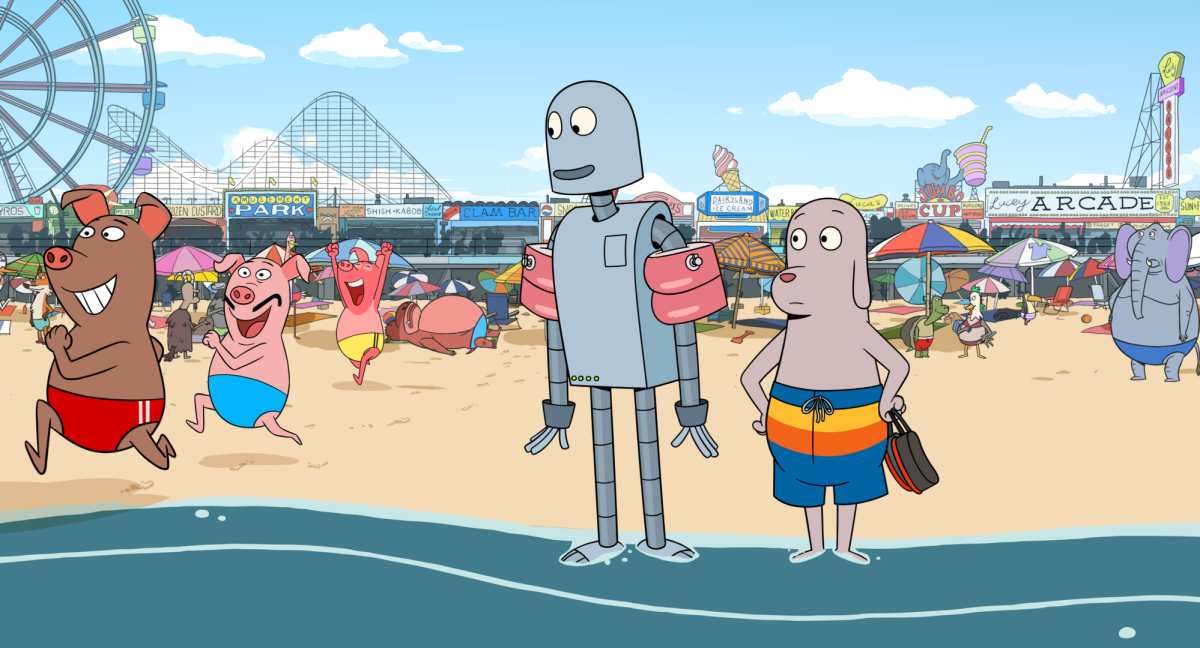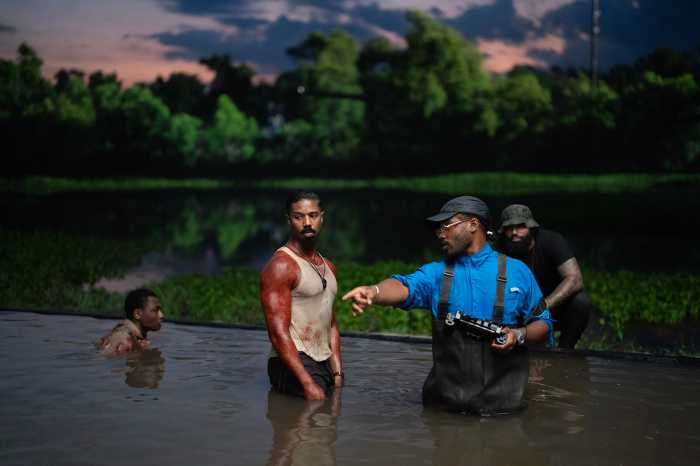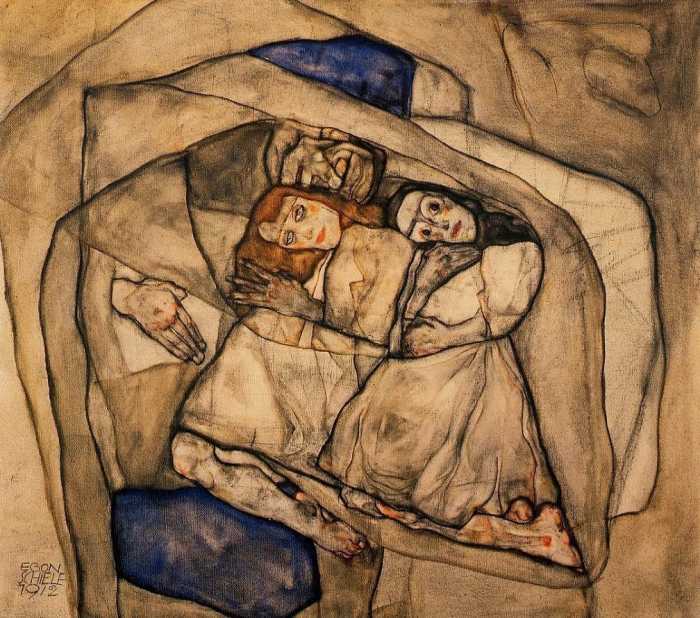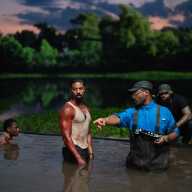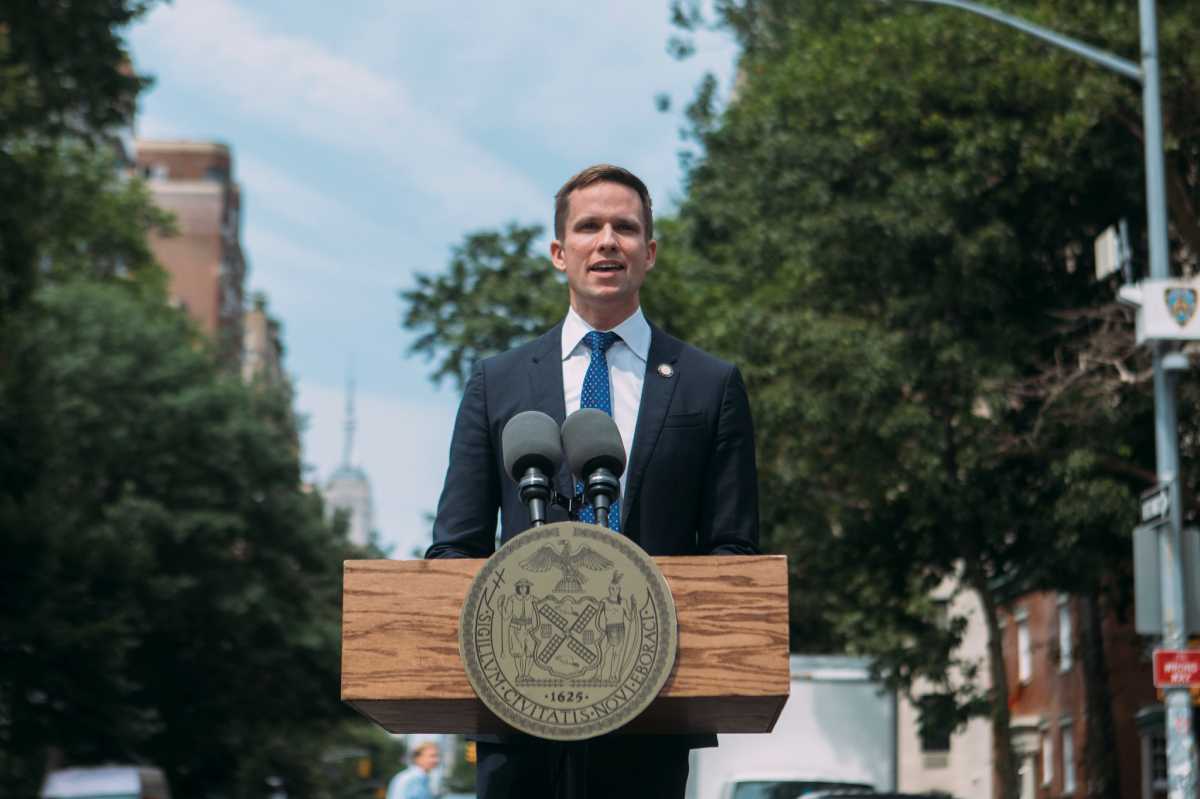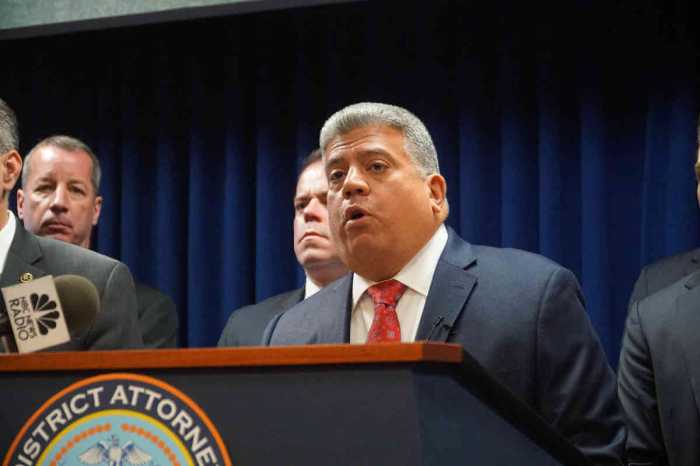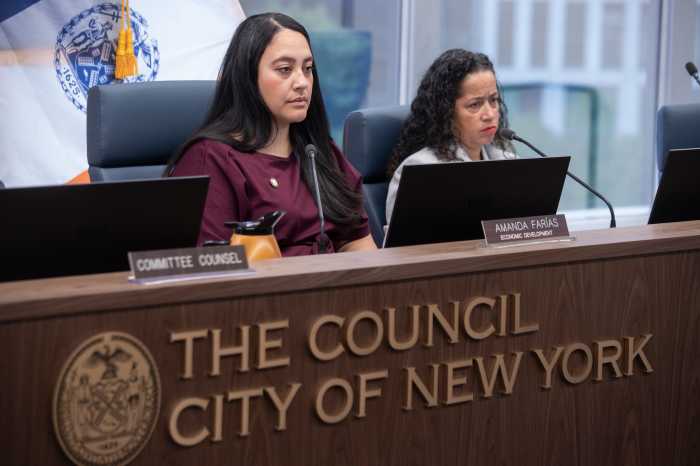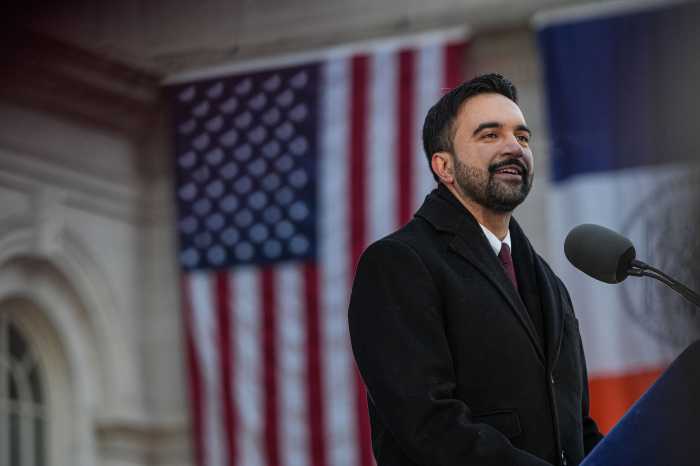Adapted from Sara Varon’s graphic novel, and a nominee for Best Animated Feature at the 2024 Academy Awards, “Robot Dreams” is a poignant, wordless bromance that captures feelings of love and loss. The film, written and directed by Pablo Berger, is set in the East Village in the 1980 — the Twin Towers are seen in cityscape shots, cans of Tab cola are consumed, and there is a rental case from Kim’s Video. It is also populated entirely by anthropomorphized animals.
The main character is the lonely Dog, who plays Pong by himself, joylessly microwaves his food (a frozen mac and cheese meal), and mirthlessly watches TV. However, when he sees an advertisement for the Amica 2000 robot, Dog’s tail starts wagging in anticipation. Ordering and assembling Robot, Dog instantly has a new friend, and they go out on adventures together.
The animation is inspired as a subway platform takes a moment to appreciate the cacophony of an octopus drumming on buckets (and briefly on a turtle’s back). There is fabulous sequence involving Dog and Robot dancing on roller skates for a crowd to Earth, Wind & Fire’s catchy tune, “September” in Central Park. They play Pong together, watch “The Wizard of Oz,” and visit Playland, where Dog and Robot have hot dogs and swim in the ocean. But on the beach, Robot gets rusted and stuck in the sand. Dog cannot bring him home and Robot must remain there until next June when the beach reopens. The friends are separated which leads to despair for them both.
“Robot Dreams” is sentimental, but not overly so. It actually becomes more surreal as both Dog and Robot have dreams (hence the title) of reuniting. Robot imagines being rescued, but, in fact, he ends up being dismembered as a trio of rabbits remove his leg. Robot also has a fantasy that he is on the Yellow Brick Road to Oz, and a Busby Berkely dance sequence occurs.
While Dog suffers a broken heart at Robot’s absence in his life, he tries to make new friends by going on a ski trip to the Catskills. However, he is injured after a pair of nasty anteaters torment him and force him to crash. Another episode, where he decorates a neighbor’s snowman, becomes a fantasy sequence after the snowman comes alive and takes Dog bowling, where he performs poorly. In a later, realistic sequence, Dog meets Duck in the park, but their relationship ends abruptly.
“Robot Dreams” centers on its sad sack character, but Dog is sympathetic and appealing as he keeps trying to connect with someone. Viewers will want him to find love, if not like, with someone who appreciates him.
Dog’s relationship with Robot can be read as queer, and because Dog is often teased and humiliated, and bad at sports, the film also suggests he is gay — or bi given Duck is likely female — but that may be reading too much into the film. One of the strengths of “Robot Dreams” and its wordless nature is that viewers can identify with these characters and ascribe whatever genders and whatever meaning they want.
One sequence late in the film may feel superfluous, but it allows Robot to make a connection on his own, which is important. A bird discovers Robot in the sand and builds a nest to hatch three chicks. Two of the baby birds have green coloring, and the third, which is orange, develops a special bond with Robot. Their relationship is touching as Robot encourages the baby orange bird to fly. Are they connecting because they are both “outsiders”? Perhaps. “Robot Dreams” feels like it is celebrating the outcasts which may be why it resonates emotionally with viewers.
How the (b)romance narrative plays out for Dog and Robot is best left for audiences to discover. But director Pablo Berger uses animation well. The skiing episode is exciting, and when the snowman uses his head to bowl, it is amusing. A sequence in a junkyard is also vividly rendered. The world building here is impressive and the film features several clever details like Dog reading Stephen King’s “Pet Semetary.”
“Robot Dreams” is about loss and grief in relationships, which is rare for an animated film to address, especially one without dialogue. This is not kids’ stuff, but there is nothing inappropriate for younger viewers. The power of this marvelous drama is that Berger makes viewers feel deeply for these characters.
“Robot Dreams” | Directed by Pablo Berger | Opening May 31 at Film Forum

